“I didn’t even know that movable metal type printing technology was invented in Korea. That’s such an interesting fact. People usually think that this great invention was made in Germany, France, or England, but that’s not true. I think this invetion and Jikji is so important for world history.” – Diana, Russia –
“I was really shocked actually that it was Korea who invented movable metal type. I feel like this is such a vitally important part of one of the most influential inventions in the world, the printing press.”
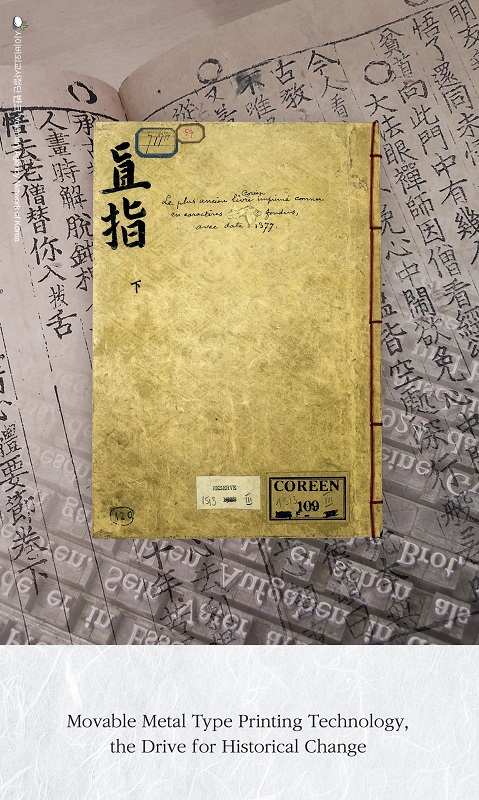 Did you know Korea made an invention that changed the world?
Did you know Korea made an invention that changed the world?
Life Magazine’s millennium special issue, published by Time, listed the invention of the printing press in the top 100 events that changed the world in the last millennium. And many world history books published in North America and Europe devote major coverage to the printing of the Gutenberg Bible in the 1450s. Why is the printing press historically so significant? It is because the invention of movable metal type enabled mass printing and the spread of knowledge, leading to the Renaissance, the Reformation, the Civil Revolution, and the Industrial Revolution. However, there is another fact that many westerners are unaware of. The country that invented movable metal type was actually the Korean kingdom of Goryeo (918-1392).
A historical text, Dongguk Yisang Gukjip (Collected Works of Minister Yi of Goryeo), mentions that Sangjeong Gogeum Yemun, a 50-volume series of books about rituals, was printed in 1234 with movable metal type. That is over 200 years earlier than the printing of the Gutenberg Bible in 1455. Unfortunately, Sangjeong Gogeum Yemun has not been found. However, Goryeo’s Jikji, the oldest extant book printed with movable metal type, was found at the National Library of France in 1972.
Dr. Park Byeongseon, who worked as a librarian at the library, came across Jikji mixed with unsorted documents. Inside the book, it was clearly indicated that Jikji was printed with movable metal type in 1377. Jikji proved that Korea was indeed the first country to use movable metal type for printing. In September of 2001, UNESCO inscribed Jikji on the Memory of the World Register. Jikji is the only UNESCO world heritage artifact that is not in the country of register. Jikji was printed in 1377, which is 78 years earlier than the printing of the Gutenberg Bible. Researchers suspect that Goryeo’s movable metal type printing technology was spread to Europe through China. Korea’s printing technology was spread to China and Japan. There is a record in a Japanese document, Tokiyoshi Kyoki, that Joseon’s movable copper type was brought to Japan and used to print books. Although it is lesser known than Gutenberg’s printing press, Korea’s printing technology made a significant impact on world history.

Did you know Korea has the largest concentration of dolmens (stone tombs shaped similarly to tables) in the world?
UNESCO designated the Gochang, Hwasun, and Ganghwa dolmen sites in Korea as World Heritage Sites in December of 2000. Korea is called a country of dolmens because it accounts for 40% of the world’s dolmens. There is another fact that people don’t know about. Some of the dolmens found in Korea contain astronomical engravings that show surprisingly accurate constellations. Dolmens engraved with star charts are found in Pyeongyang in North Korea and Chungcheongbukdo Province in South Korea. These dolmens are important relics from the ancient Korean kingdom of Gojoseon (2333-108 B.C.).
In 1978, an interesting stone slab was found in a dolmen site in the town of Cheongwon in Chungchengbukdo Province. The slab had 65 holes of various sizes engraved on it. Researchers found that the holes represent the Big
Dipper, the Little Bear, the Dragon, and Cassiopeia, showing the sky around 500 B.C. Ancient star charts have historical significance because they reflect the level of science at the time. Star charts comprise important evidence for the civilization of ancient Egypt and Mesopotamia. A stone slab found in North Korea contains a star chart that shows the sky around 3000 B.C. It precedes the star chart on the ancient Babylonian boundary stone that shows the sky around 1200 B.C.
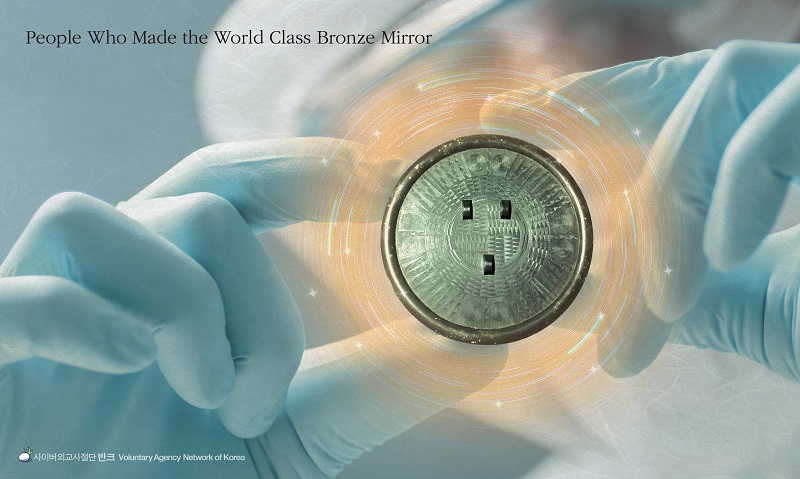
Did you know Korea has an ancient bronze mirror with incredibly precise patterns?
Korea is one of the leading providers of semiconductors in the world and is leading the global semiconductor technology in the 21st century. Samsung Electronics, the global semiconductor leader, found an ancient mold for bronze casting during its ground preparation for a semiconductor plant in the city of Yongin in Gyeonggido Province.
This mold was used to cast bronze mirrors like Korean National Treasure #141 Danyusemungyeong (bronze mirror with fine geometric patterns). The ancient mirror, also known as a fine-lined mirror, was cast around 4 B.C. The rear of the 8.3-inch-diameter mirror is adorned with 13,300 concentric circles of 0.001 inches. The lines are in micron size, which is difficult to replicate even with today’s nanotechnology.
The microscope was invented in the late 16th century in Europe. It is a mystery how the people of Gojoseon (2333-108 B.C.) cast such microscopic lines on the mirror in the prehistoric period. The ancient bronze mirror shows evidence of the advanced scientific technology that the first Korean kingdom of Gojoseon possessed.
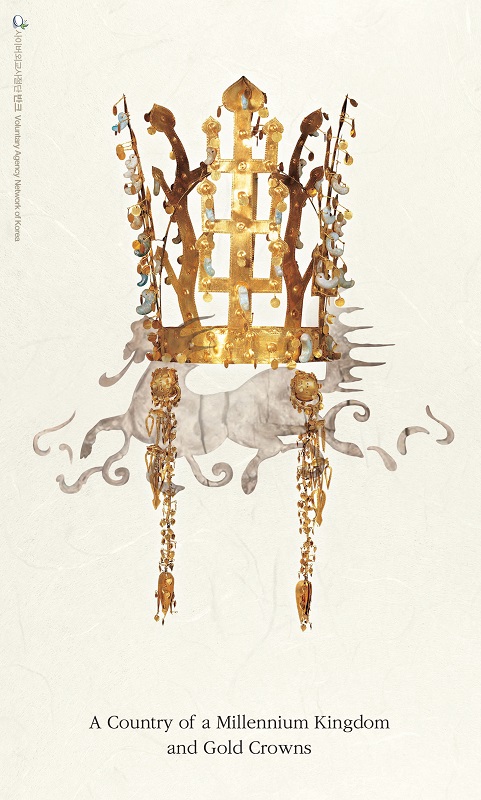
Did you know Korea has the largest number of ancient gold crowns in the world?
Among the 13 ancient gold crowns found around the world, seven are from the ancient Korean kingdom of Silla (57 B.C.-A.D. 935). For this reason, Silla is also known as the kingdom of gold crowns. Silla is considered the ancient leader in gold crown production. What did gold crowns mean to the people of Silla? The Silla crowns are embellished with ornaments that resemble deer antlers and tree branches. Ancient Silla people saw the deer as a messenger of heaven and trees as pathways to heaven. Gold signifies eternity.
Given that the gold crowns were found in the tombs of the kings, they may symbolize Silla kings’ determination to protect the people even after death. The average length of a Chinese dynasty is 150 years. It is rare to find a dynasty that lasted for a millennium. Silla kings’ dedication to the people might have been the drive for the kingdom’s longevity. Silla’s gold crowns represent the legacy of the millennium kingdom.
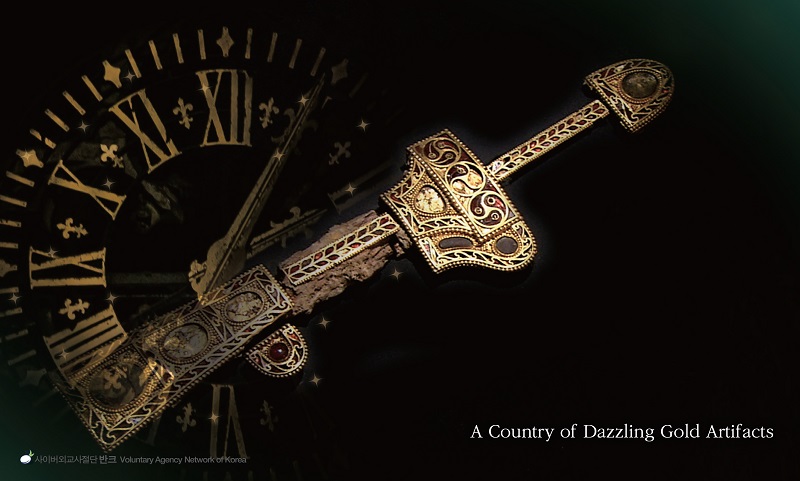
Did you know Korea has world-class ancient gold artifacts?
An ornate gold dagger was excavated from a small tomb on Gyerim Street in the city of Gyeongju, Korea. The dagger appeared to be crafted by a master goldsmith in Rome around 6 A.D. Designated as Korean Treasure #635, this dagger is considered one of the world’s most precious ancient daggers because of its exquisite design and impeccable condition. It is 14-inches long and 3.7-inches wide at its thickest part and is embellished with a large quantity of precious garnets.
This dagger is presumed to be made by a Roman goldsmith because it is adorned with an ancient Greek spiral and Mediterranean laurel patterns. How did a dagger made in Eastern Europe end up in Korea? No other dagger of this kind was found in East Asia. Could it be evidence of exchange between Silla and Europe? As a matter of fact, Silla (57 B.C.-A.D. 935) was known as a country of gold in the ancient Arab world. Silla was described as a heaven in ancient Arabic books. And Silla left many relics that resemble the faces of the Arabic in its capital of Gyeongju. The dagger found in the tomb in Gyeongju may indicate that Silla was an open and international kingdom.
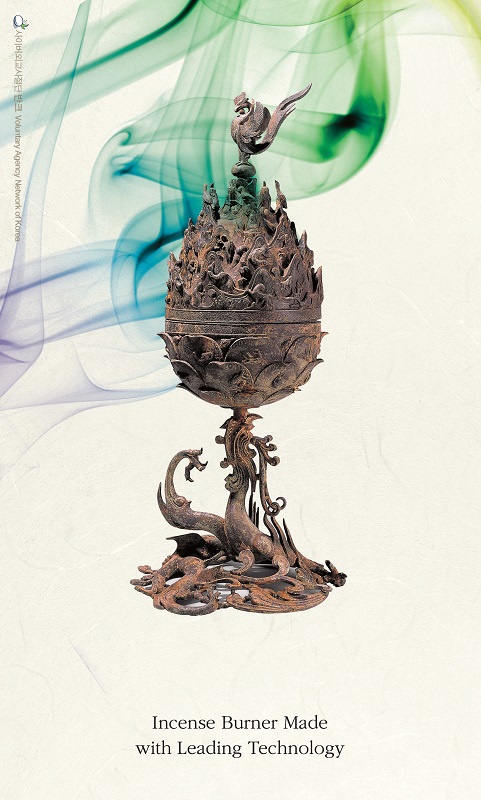 Did you know Korea has an ancient incense burner made with world-class technology?
Did you know Korea has an ancient incense burner made with world-class technology?
In the New Testament, there is a story about the Wise Men who gave Jesus the gift of incense. Korea has a 1400-year-old incense burner. A gilt-bronze incense burner was excavated in the town of Buyeo in Chungcheongnamdo Province in December of 1993. The incense burner revealed the level of art in Baekje (18 B.C.?A.D. 660), a Korean kingdom that lasted for about 700 years. It is over 24-inches high, three times higher than an average incense burner. And it weights 26 lbs. It is the largest ancient incense burner in East Asia. It is evidence of Baekje’s high level of art and science.
This incense burner is shaped like a dragon holding a blossoming lotus in its mouth. It is decorated with 160 creatures, including animals, plants, and human figures. Every part is delicately crafted in detail, showing Baekje’s advanced technique. Baekje used a technique called mercury amalgamation, which creates a shape with mercury and gold and then vaporizes the mercury to leave only gold. This technique was used 1000 years earlier than the West.
The burner represents the state of the art technology Baekje possessed. How was it regarded at its own time? Samguk Sagi, a record of the three ancient Korean kingdoms, described Baekje as simple but not shabby and elegant but not lavish.
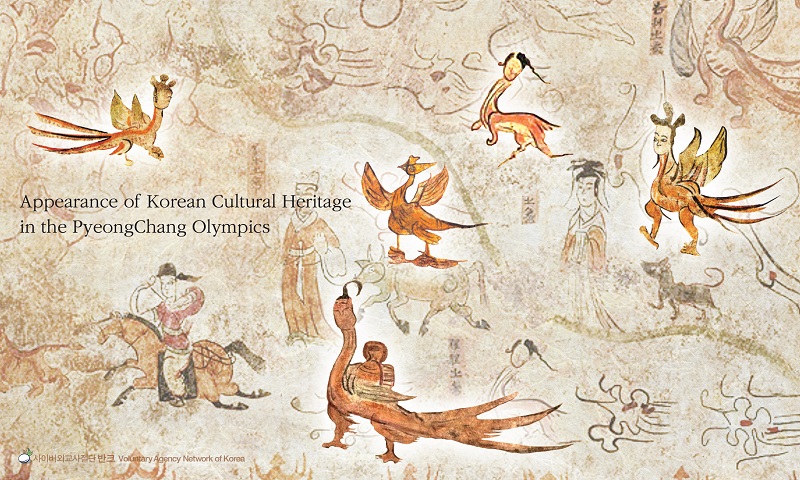
Did you know the PyeongChang Olympics made a mythical creature from Goguryeo a global star?
The creature was painted on a wall of a tomb that was created in 408. It was recreated for the Olympics opening and closing ceremonies, drawing international attention. The talk of the town was a human-faced bird, Inmyeonjo in Korean. It was inspired by the mural of Inmyeonjo at Deokheungri Tomb in North Korea.
The over 1600-year-old bird was reborn with dancers, who were also a recreation based on the mural at another Goguryeo tomb of Muyongchong. Inmyeonjo was the biggest Korean star during the 2018 Olympics. Those who saw Inmyeonjo on TV were intrigued by its appearance, with its human face, a giraffe-like long neck, and large wings. Inmyeonjo aroused interest in traditional Korean art and culture. This imaginary bird appeared in other paintings from Goguryeo, Baekje, Silla and even Joseon.
What kind of country was Goguryeo? Goguryeo comprises around 700 years of Korea’s 5000 years of history. It was an ancient Korean kingdom that existed from 37 B.C. to 668. With strong power and an advanced culture, Goguryeo ruled the Northern parts of Korea and a considerable portion of Manchuria. Numerous people around the world heard the name of Korea during the 1988 Summer Olympics in Seoul and the 2018 Winter Olympics in PyeongChang. Most of them probably didn’t know that the English name of Korea originated from the kingdom of Goryeo (918-1392), which took its name from Goguryeo. Goguryeo was also called Goryeo.
Wang Geon, the founder of Goryeo, named his kingdom Goryeo to proclaim its succession to Goguryeo. Goryeo was very international and made its name known to the world. However, Goguryeo was the origin of the name of Korea. Inmyeonjo was also a creation of Goguryeo. A long history and rich cultural heritage are the forces behind Korea’s strong cultural power.
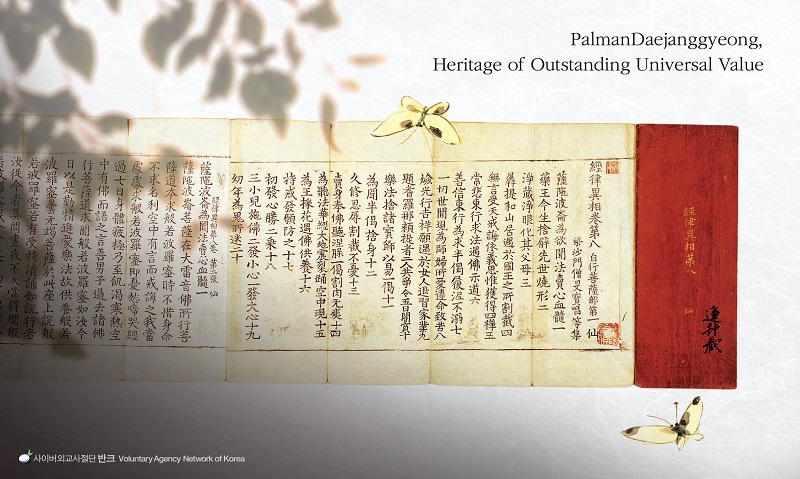
Did you know Korea has one of the most comprehensive collections of Buddhist canons in the world?
A country’s cultural level is indicated in its printing technology and books because literature delivers the knowledge of the time. Mugujeonggwang Daedaranigyeong (The Great Dharani Sutra) from Silla is the world’s oldest surviving book printed with wood blocks. Printing technology on the Korean peninsula continued to develop. About 300 years later, Goryeo printed and exported a vast number of books to China.
Goryeo (918-1392) was a leading cultural power. Goryeosa Jeolyo (Concise History of Goryeo) documented that Emperor Zhezong of Song China ordered 5,200 books of 125 kinds from Goryeo in the year of 1091 alone. The emperor recognized the value of Goryeo’s books and ordered his servants to import them and copy them by hand if necessary. Among the most valuable documentary heritage from Goryeo is Palman Daejanggyeong (Tripitaka Koreana), Korean National Treasure #32. It is also inscribed on the UNESCO Memory of the World Register in 2007.
Palman Daejanggyeong, meaning Eighty-thousand Tripitaka, was given the name because over 80,000 wooden printing blocks were used to print the entire collection of Buddhist scriptures. Given that the thickness of each wood block is 1.6 inch, if all of the 81,352 blocks were stacked up, it would be higher than Baekdusan Mountain, the tallest mountain in Korea, rising over 9,000 feet above sea level. It would weigh 280 tons.
However, it is not just the vast quantity that makes Palman Daejanggyeong great. The process of making each block required technology as complicated as producing semiconductor chips today. The entire collection of the great number of blocks were completed to perfection. It was a national project that involved more than 500,000 people for 16 years. Goryeo and Song China were the only countries that could organize this scale of a project for printing Buddhist scriptures. Buddhism was the dominant religion in Middle-age East Asia. Printing of this vast collection of Buddhist scriptures reflects the height of Goryeo’s cultural development.
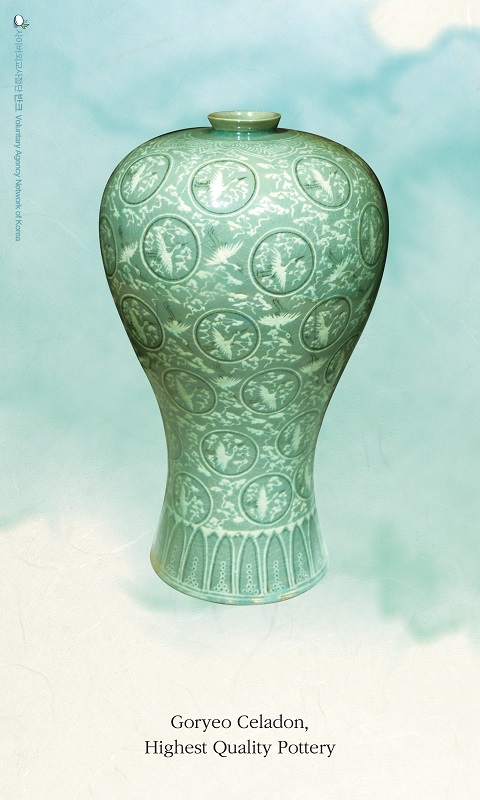 Did you know Korea has the highest quality pottery from the 10th century?
Did you know Korea has the highest quality pottery from the 10th century?
Celadon, jade green pottery, was first made by China. However, even the Chinese coveted Goryeo celadons. In his book, Xiuzhongjin, Song Dynasty writer Taiping Laoren listed Goryeo celadons as the most-desired items in China. An envoy from Song’s emperor wrote in GaoliTujing (Illustrated Travelogue of Goryeo) that Goryeo celadons are as refined as Chinese counterparts. Famous Song Dynasty poet Su Shi included two of Goryeo’s artifacts in the top 10 items in the world. They were Goryeo celadons and bells. China was the major exporter of exquisite pottery. What made the Chinese admire Goryeo celadons?
Celadon required cutting-edge technology to make. China and Goryeo were the only countries that had the technology to make celadons. The people of Goryeo learned pottery-making techniques from China and began producing celadons in the 10th century. By the 12th century, Goryeo produced pottery that matched or exceeded the quality of Chinese pottery.
Goryeo (918-1392) developed a unique technique called the Sanggam Method, which is a method of etching patterns into a surface and adding colored clay. Celadon made with this inlay technique boasted a unique jade-green shade that was incomparable to any other. The most well-known Goryeo celadon is Celadon Prunus Vase with Inlaid Cloud and Crane Design, Korean National Treasure #68. This vase has a wide body and a narrow mouth with inlaid patterns of clouds and cranes. The fineness of this work shows the level of Goryeo’s art.
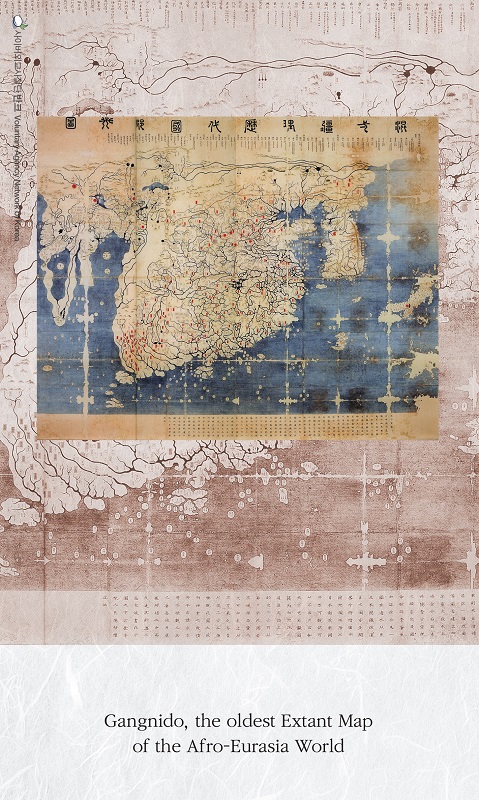 Did you know Korea has one of the oldest extant world maps?
Did you know Korea has one of the oldest extant world maps?
Honil Gangni Yeokdae Gukdo Jido (Gangnido for short) is a world map that was drawn in the early 15th century. Its name means “the map of the world to know.” It was created in 1402, ten years after the establishment of Joseon (1392-1910), by deputy prime ministers. It was made by integrating different maps from Korea, China, and Japan. What is surprising is that it included Africa, which is about 100 years earlier than any European maps.
This map includes East Asia, South Asia, Middle East, Europe, and even Africa with the details of African coasts and the Nile. There was no comparable map with such level of comprehensiveness at the time. This map reflects Joseon’s advanced understanding of the world. How was Joseon able to create such an accurate map of the world? It indicates the height of Joseon’s literacy, science, and culture.
British historian Joseph Needham praised Gangnido as the best map of the time. This map was also used for the cover of “the History of Cartography: Cartography in the Traditional East and Southeast Asian Societies,” published by University of Chicago Press. In another book, “Cartographia: Mapping Civilizations,” co-authored by Vincent Virga and the U.S. Library of Congress, the authors evaluation was that there is no map comparable to this map, and it created a new Korea.
 Did you know the Korean alphabet was created by a king for the people? The king is King Sejong of Joseon (1392-1910).
Did you know the Korean alphabet was created by a king for the people? The king is King Sejong of Joseon (1392-1910).
King Sejong felt sorry for commoners who were suffering due to illiteracy. Despite the objection of the noble class, he decided to create an alphabet that anyone can learn in a day. The story behind King Sejong’s creation of Hangeul is described in the Hunminjeongum Manuscript or Hunminjeongum Haerye in Korean. The manuscript was inscribed on the UNESCO Memory of the World in 1997. The Haerye is a commentary on the Korean alphabet of Hangeul, published in 1446, three years after the invention of Hangeul. It explains how each letter was designed. Due to its scientific design, Hangeul can replicate all available sounds in writing. And it allowed the most vulnerable to express their thought and feelings in writing.
What makes Hangeul special? Dr. Samuel Robert Ramsey, Professor of East Asian linguistics at the University of Maryland, researched Hangeul for over 50 years. In many interviews, he praised Hangeul’s scientific design and described the invention of Hangeul as an unprecedented achievement and monumental development. He particularly values the humanitarianism that is reflected in Hangeul. King Sejong’s idea of educating all people, regardless of gender and class, was seen as dangerous and offensive to the ruling class at the time. He also comments that Hangeul is not only an indicator of Korea’s level of culture, but also a gift to the world because its value goes beyond the border of Korea. Korean consonants ‘ㄱ’ ‘ㄴ’ and ‘ㄷ’ imitate the shape of vocal organs, showing a clear connection between sound and writing. On the other hand, in English, there is no clue to find any connection in pronunciation between consonants ‘d’ and ‘t.’ Dr. Werner Sasse, professor at the University of Hamburg, praises King Sejong for his systemization of phonology, five centuries earlier than the West, and calls Hangeul the best alphabet that combines philosophy and scientific theory. British historian John Man describes Hangeul as the best alphabet that all languages have dreamed of.
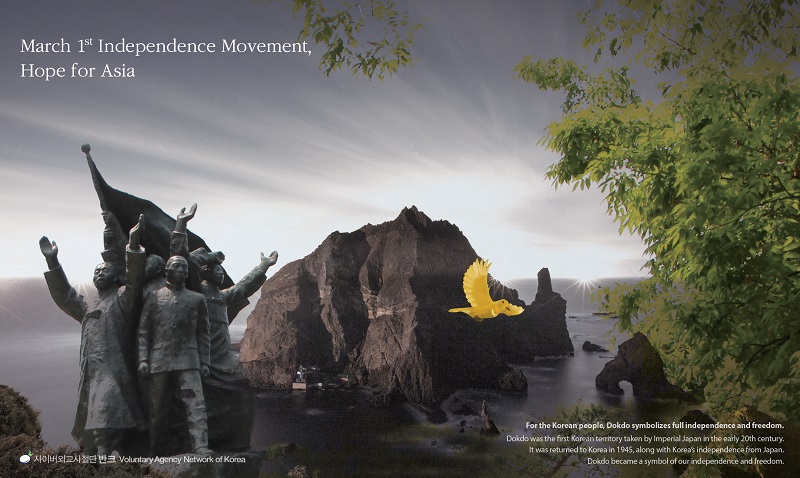
For the Korean people, Dokdo symbolizes full independence and freedom. Dokdo was the first Korean territory taken by Imperial Japan in the early 20th century. It was returned to Korea in 1945, along with Korea’s independence from Japan. Dokdo became a symbol of our independence and freedom
Did you know Korea led one of the largest nationwide independence movements after WWI?
On March 28, 2018, the New York Times homepage covered a story about Korean independence activist, Yu Gwan-sun. She was a 16-year-old girl when she participated in the movement. The newspaper unexpectedly published Yu’s obituary 98 years after her death. Then, what was the March 1st Independence Movement? About two million people, a tenth of the population, took to the streets on March 1, 1919 when there was no advanced means of communication. It resulted in 70,418 casualties, among which 7,509 were killed, 15,961 injured, and 46,948 were arrested and tortured.
Why did so many people participate in the movement? The Korean people lost their national sovereignty for the first time in its 5000 years of history. From 1910 to 1945, Japan colonized Korea, and exploited Korea’s human and material resources suppressing the Korean national identity and culture. Japan also spread a false claim that Koreans welcomed Japanese rule.
Throughout Japan’s occupation of Korea, Koreans tenaciously fought Japan’s colonial rule. On March 1, 1919, a man read out the Declaration of Independence at Tapgol Park and about 5,000 people cheered for independence. Despite a brutal suppression, many Koreans across the country participated in this nonviolent independence movement. Major international news media, including the New York Times (USA), Entente (France), and the Morning Post (UK) reported this news to the world. And Xin Chao, a Peking University magazine, described this movement as “a revolution without weapons”, “a challenge to achieve the impossible,” and “a pure student movement” that “opened a new era in the history of revolution.” The March 1st Independence Movement made Koreans’ voices heard and influenced the May Fourth Movement in China and other national movements around the world. It brought hope for people who were suffering from the same fate in colonies around.

